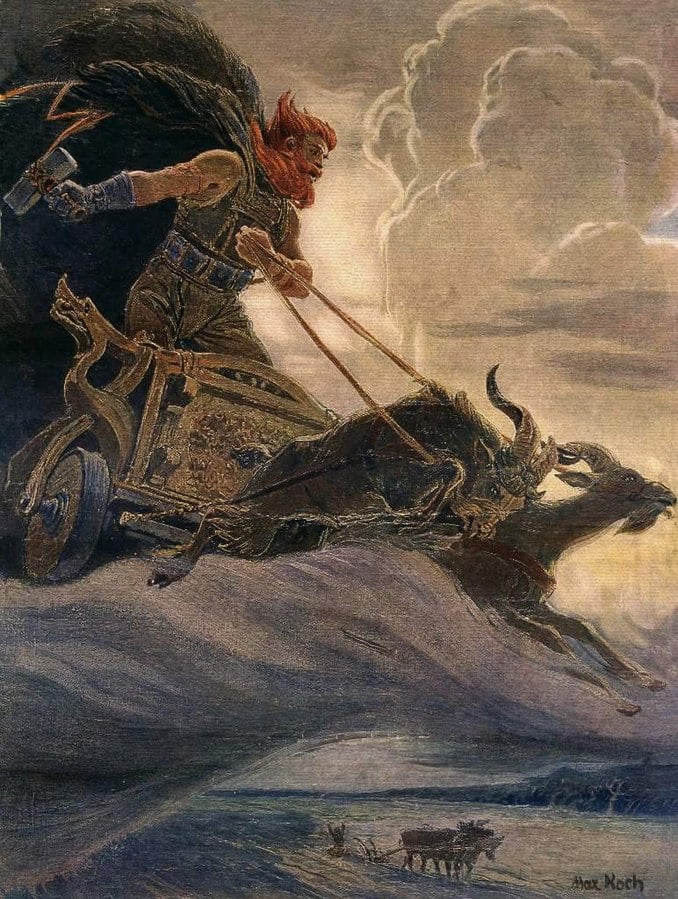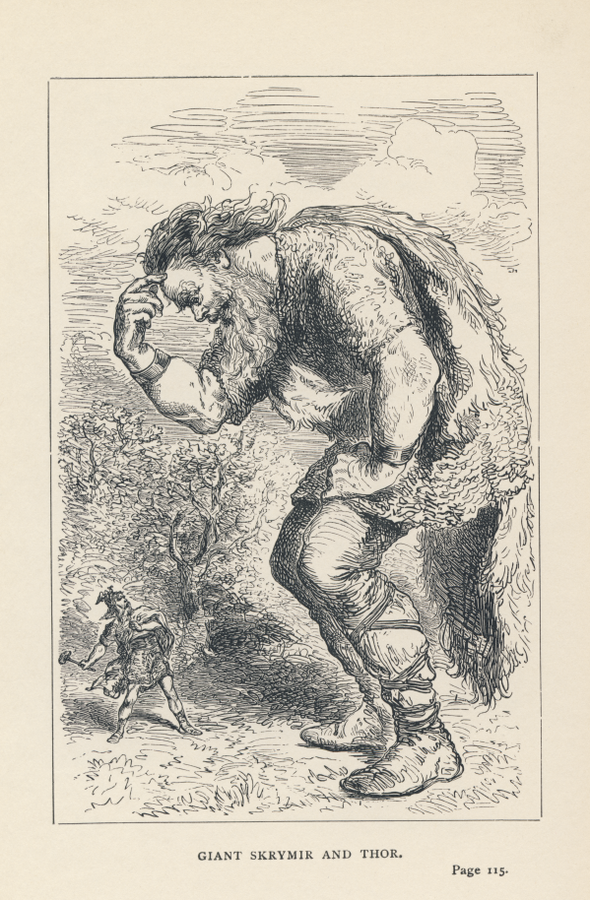Thor: Norse God of Lightning and Thunder

"Donar-Thor" by Max Koch, public domain
I don't think it's a secret that Thor is my favorite god (not goddess - that spot is reserved for Hel) from Norse mythology, or any mythology, for that matter.
Not only is Thor's hammer, Mjolnir, part of my website logo, but he also plays a major role in my out-of-print book series, War on the Gods Companion Stories (soon to be newly published as The Gods Are Rotting).
Marvel's interpretation of him is also by far my favorite superhero of the brand, and I could watch the MCU Thor movies over and over and never get sick of them. (Yes, all of them, even the "weaker" installments.)
But who is Thor in the original stories? We know all about the way he's been adapted in pop culture, but how accurate are those interpretations?
Let's find out.

"The Giant Skrymir and Thor" by Louis Huard, public domain
Thor is described as the red-bearded Norse God of Lightning, Thunder, Strength, and many other things. He's the protector of humanity, and some believe he's the most powerful immortal among the Aesir, despite not being their chief. The title "Chief of the Aesir" belongs to the All-Father: Odin, Thor's dad.
Being such a strong deity, Thor loves to travel to Jotunheim to slay the giants who live there (just for fun). However, as we know because of Spider-Man, with great power comes great responsibility. It is prophesied that Thor will die during Ragnarok - which is the predicted apocalypse in Norse mythology - after he finally slays Jormungandr, the world serpent.
It's said that Thor wields a mighty hammer named Mjolnir, and he rides a chariot pulled by his flying goats, Tannsgrisnir and Tanngnjostr. He also possesses a belt that doubles his incredible strength and a pair of gloves that some theorize help him wield Mjolnir as he's utilizing its powerful magic.
Sif, the golden-haired Goddess of Fertility, is Thor's wife. And contrary to what comic books and a couple of novels I've read recently say, Loki is not Thor's brother... by adoption or blood.
Thor is featured in many stories in the Norse sagas, but I think my favorite tale with him is the one where the giant Thrym steals Mjolnir as a ploy to trade it back for Freyja, Goddess of Love and Beauty's hand in marriage. Freyja, of course, refuses the giant's proposal, but Thor still wants his hammer back.
Heimdall comes up with a plan: Thor will travel to Jotunheim disguised as Freyja, and Loki will come too, disguised as Freyja's servant. The idea is most undignified in Thor's eyes, but he eventually agrees to it. He travels to Jotunheim dressed as Freyja, his face hidden by a veil, and Loki accompanies him dressed as a servant.
Thrym has no idea of Thor's and Loki's true identities due to Loki's trickery, and the giant eventually has Mjolnir brought out as a "wedding gift." Once Thor has Mjolnir, he strips away his disguise and beats Thrym and the other giants at the wedding into bloody pulps.
So... no. Pop culture depictions of Thor aren't always accurate, but that's okay. We can still enjoy the original stories.
I hope you enjoyed August 2021's Myth of the Month!

Receive a free book and never miss an update from A. P. Mobley by signing up for her newsletter, War on the Gods Army!
Thanks for joining War on the Gods Army!
Be sure to check your email inbox for your free book. If you don't see it, check your spam and promo folders for it.